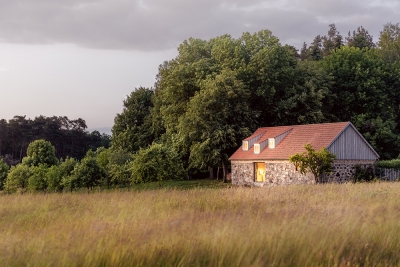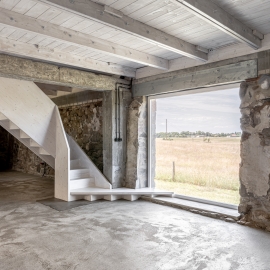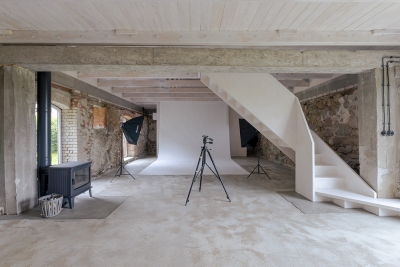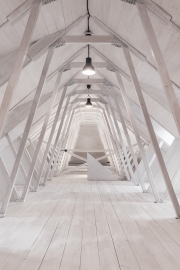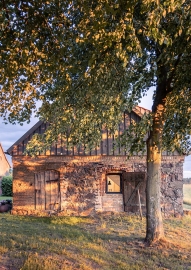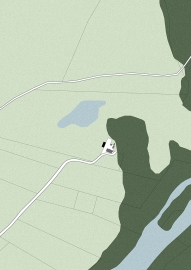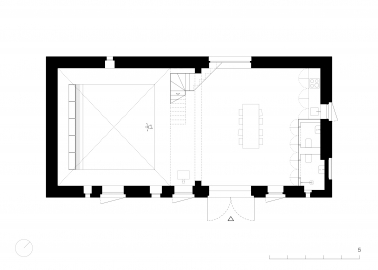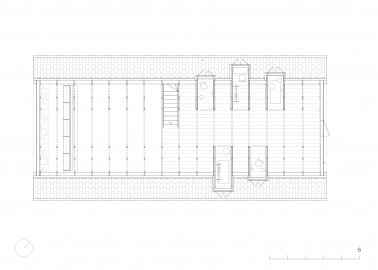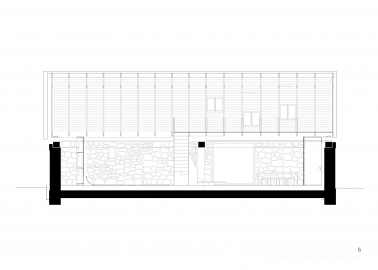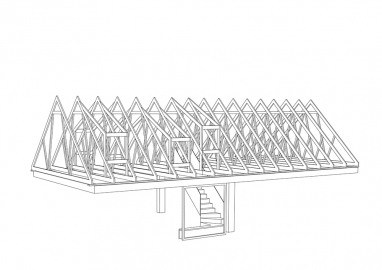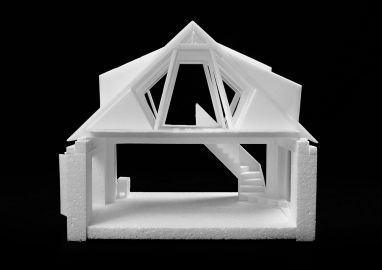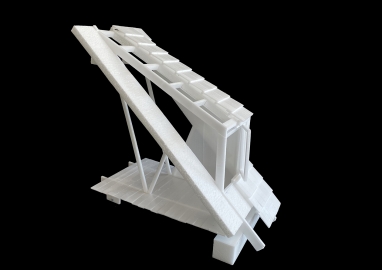Rieckshof Photo Studio
Rieckshof - „This very insatiability of the photographing eye changes the terms of confinement in the cave, our world.“ (Susan Sontag, In Plato’s Cave, 1973)
The picturesque stand-alone location of a historic outbuilding and the parameters of the
almost inexistent construction budget set the stage for a balance of introversion and
extroversion in this barn-conversion from the very beginning. In the transformation from a
stable into a photo studio as a temporary workspace, the room initially closes itself off from
the outside. It is entirely focused on the production of the images against the abstract
setting of a background sweep. The double height of this part of the room allows the gaze
to wander all the way up to the closed roof panel. The dense nail truss roof with 50mm
construction thickness and approx. 95cm axial dimension floats above the new, rough
heating screed of the stable floor. The load of the industrial roof construction is taken up
and transferred by a ring beam and a centrally placed bearer with support pads made of
reinforced concrete. These massive, linear structural elements mark the division into the
inwardly directed photographic work on the left and the more convivial areas, consisting of
conference, cooking, showers and the changing room niches with their carefully raised
dormer windows tucked away under the roof in the right half of the barn.
A radical cut is required to create a recognizable division between the introversion of the photo studio and the intended extroversion for the fluctuating crowd of guests. Photographer and team are given a single generous view of the hilly expanse of the
Uckermark landscape. This view is perfectly aligned with the barn door and echoes its dimensions of 2 x 2,40m. At this point of articulation between the upwardly consolidated changing room and the open barn space below, a staircase inscribes itself into the angle of construction and opening. At this essential point, all design parameters are condensed into a single seismic point. In terms of construction, the demands on the supporting structure, the physical properties of the building and the necessary geometry of the staircase push the limits of feasibility. The subject here is the horizontal and vertical anchoring of the centre line within the open space and how it can be experienced when walking up and down between the narrow structure of the original building above and the new generous scenery below.
One adjustment is even made during construction: the barn door opens and the landscape
appears in the room. The client's call for a diamond cut through the 500-600mm fieldstone wall causes the staircase to be moved by one truss axis so that the Palladian view can remain
unobstructed. The architecture acts in the manner of overdelivering with a raised 3-dimensional accordion situation for the staircase as a new shoulder joint in the space, which
may be occupied in climbing, sitting, standing and lying down. „If you know where to look,
the process of negotiation is made visible through an architectural language of slight offsets
between the elements: They work together, but they remain strangers to each other. They
complement each other, but they don’t fully fit together. [The author] uses an architectural
language that does not fully smooth out the counteracting agendas, but subtly gives them a
remaining narrative presence in the space.” (Matthias Ballestrem, Reformulating without Words, https://ca2re.eu/results/reformulating-without-words/)

